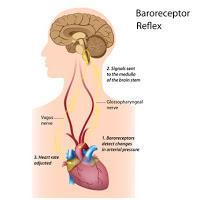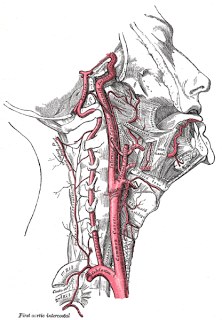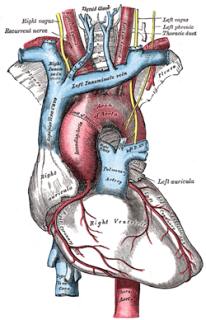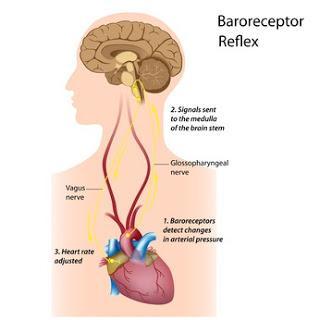 I found this nice little illustration of baroreceptors that I'm excited to share with you. Okay, I admit it, I'm a little obsessed with baroreceptors. But that's because ever since I found out how our baroreceptors help regulate our blood pressure and I understood how we can use this aspect of our anatomy to switch our nervous systems from fight or flight to relaxation mode, I've not only included supported inverted poses in my practice on a regular basis but I've been on a mission to spread the word. Using supported inverted poses for stress management is one of easiest ways—at least for me—to calm yourself down because all you have to do is set yourself in the pose and stay there for a while. The shape of the poses itself causes the baroreceptors to work their magic.
I found this nice little illustration of baroreceptors that I'm excited to share with you. Okay, I admit it, I'm a little obsessed with baroreceptors. But that's because ever since I found out how our baroreceptors help regulate our blood pressure and I understood how we can use this aspect of our anatomy to switch our nervous systems from fight or flight to relaxation mode, I've not only included supported inverted poses in my practice on a regular basis but I've been on a mission to spread the word. Using supported inverted poses for stress management is one of easiest ways—at least for me—to calm yourself down because all you have to do is set yourself in the pose and stay there for a while. The shape of the poses itself causes the baroreceptors to work their magic.As I wrote in my post Just in Time for the Holidays: Inverted Poses, the reason that inverted poses trigger the relaxation response is due to the pressure sensors called baroreceptors that are connected to the nerves controlling your heart rate and blood pressure. Your baroreceptors are located in the wall of each internal carotid artery at your carotid sinus (the arteries on each side of your neck that carry blood from your heart to your brain).
 And in the wall of your aortic arch (just above your heart).
And in the wall of your aortic arch (just above your heart).
Aortic Arch
These baroreceptors detect any changes in your blood pressure, stretching when your blood pressure is high and shrinking when your blood pressure is low. If your baroreceptors detect a fall in your blood pressure, they send signals via your nerves to increase your heart rate, constrict your blood vessels to raise your blood pressure, and switch your nervous system to fight or flight mode. Likewise, if your baroreceptors detect abnormally elevated blood pressure, they send signals to slow your heart rate, relax your blood vessels to lower your blood pressure, and switch your nervous system to relaxation mode. And now I have a picture to illustrate this!
Because there are baroreceptors in your carotid sinus (the arteries on each side of your neck that carry blood from your heart to your brain) inverted or partially inverted poses where your neck is flexed (that is, your chin is pointing toward your chest), as in Shoulderstand, Plow pose, or Bridge pose, puts added stimulation on your baroreceptors, which may enhance the calming effects of the inversion.
Any yoga pose where your heart is above your head is considered to be an inversion. Inverted yoga poses include full inversions, such as Headstand and Shoulderstand, where your heart is directly over your head and the rest of your body is also fully inverted. Partial inversions, such as Downward-Facing Dog pose and Standing Forward Bend, where your heart is less directly over your head and your legs are either not fully and not at all inverted, are also considered inverted poses and will have similar calming effects. As long as you are warm, quiet, and comfortable in the inverted pose, all you have to do is let the baroreceptors work their magic. Naturally, supported versions of the poses (such as Shoulderstand with a chair or Bridge pose on blankets) are more relaxing than the versions of poses in which you must support yourself, so if you’re practicing inversions for stress reduction, choose the supported versions. See Just in Time for the Holidays: Inverted Poses for a complete list of the inverted poses.
I'm such a believer in these poses that I recently had a friend (thank you, Erin Collom) take photographs of me doing all the supported inversions, so I could write in detail about the individual poses. For now, here's a photograph of a Supported Standing Forward Bend, a surprisingly calming pose.

Caution: Inverted poses may be unsafe for those with certain medical conditions (see here).

